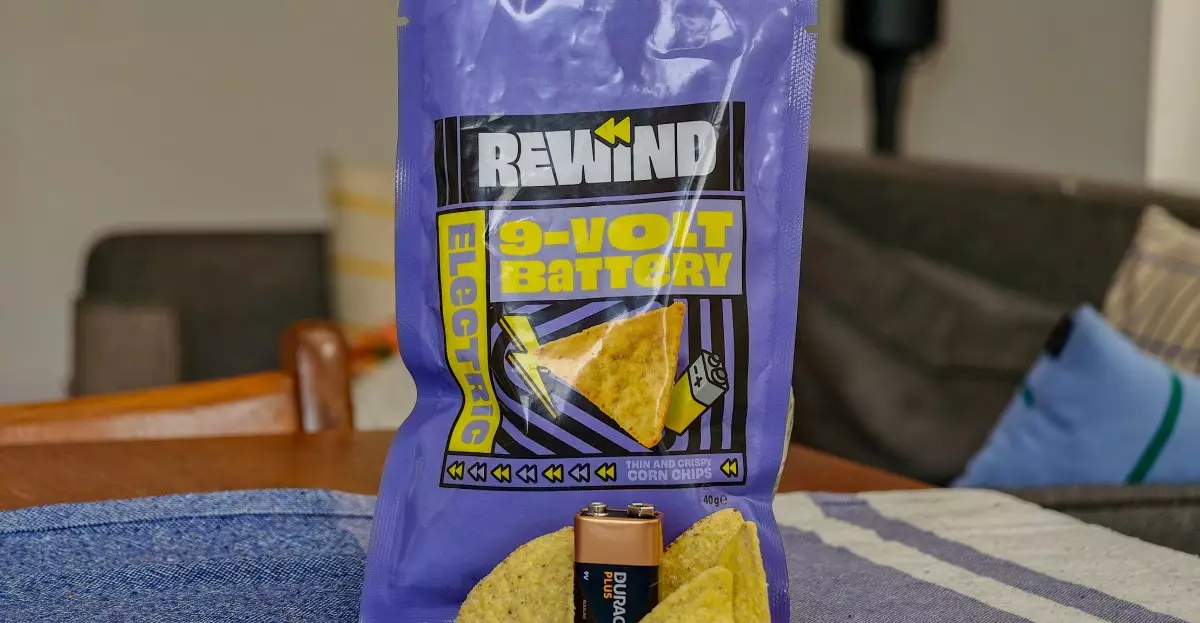In an era saturated with predictable flavors and safe culinary choices, the emergence of provocative edibles like 9V battery-flavored chips exemplifies a bold leap into sensory experimentation. These products evoke a visceral curiosity—why would anyone want to taste something that instinctively feels wrong? Yet, this daring approach is precisely what makes such innovations stand out in a crowded market. It dares consumers to challenge their palates, to indulge in the forbidden, and to embrace a segment of culinary adventure that is rarely explored. By integrating elements that evoke metallic tangs and electric shocks, creators tap into primal memories and sensations, transforming food into an experience rather than mere sustenance.
The very concept of capturing the metallic, electrifying essence of a battery within a snack underscores a fundamental shift: food as an experiential boundary-pusher. While traditional flavors aim to comfort and familiarize, modern trends increasingly favor shock value and storytelling—ingredients that carry emotional or psychological weight. This phenomenon echoes a larger cultural narrative that glorifies escapism and thrill-seeking, even in the mundane act of eating. Such innovations may seem gimmicky, but in reality, they reveal a deeper human desire for novelty and the thrill of exploring uncharted sensory territories.
Balancing Innovation with Sensory Satisfaction
Despite the apparent daring, these unconventional flavors walk a fine line—they must satisfy a craving for novelty while avoiding outright repulsion. The challenge lies in creating a flavor that is disconcerting yet intriguing, teasing the senses without turning them away altogether. In the case of the 9V battery chips, the flavor designer used citric acid and mineral salts to mimic the metallic tang, resulting in a sharp, acidic burst complemented by a subtle mineral aftertaste reminiscent of battery metal. This balance of acids and salts showcases a sophisticated understanding of flavor chemistry, elevating what could be mere gimmick into a crafted experience.
Yet, the sensory journey isn’t solely about taste. The physical texture of the chips plays a pivotal role. Thinner than preferred versions, they sacrifice some crunch but still deliver an unusual mouthfeel that complements the flavor profile. This combination of taste and texture creates a distinctive product entity that appeals to consumers with a palate for the bizarre, offering an alternative to standard snack offerings. It’s a testament to how sensory design must encompass all facets of eating: taste, smell, texture, and even the psychological narrative that accompanies consumption.
The Future of Edible Shock: More Than Just a Gimmick
Innovations like Rewind’s battery-inspired chips question the very nature of what food can be. Are these products merely curiosities, or do they signal a broader trend towards experiential eating? As consumers seek more meaningful, personalized, and memorable food moments, manufacturers may increasingly embrace absurdity as an art form. The concept of ‘nostalgia with a twist’ is especially potent because it taps into collective memories—licking a battery is a universal childhood memory, albeit one best left in the past—then reimagines it as a playful, provocative snack.
In the grand scheme, these creations are not just fleeting novelties. They mirror a cultural shift that celebrates pushing boundaries for entertainment, curiosity, and personal expression. Whether or not battery-flavored chips will become mainstream, their existence underscores a vital evolution in food innovation—one that balances the joy of surprise with the art of flavor composition. It’s a provocative reminder that sometimes, the most memorable culinary experiences are born from daring to be different, even if that difference is a shock to the system.

